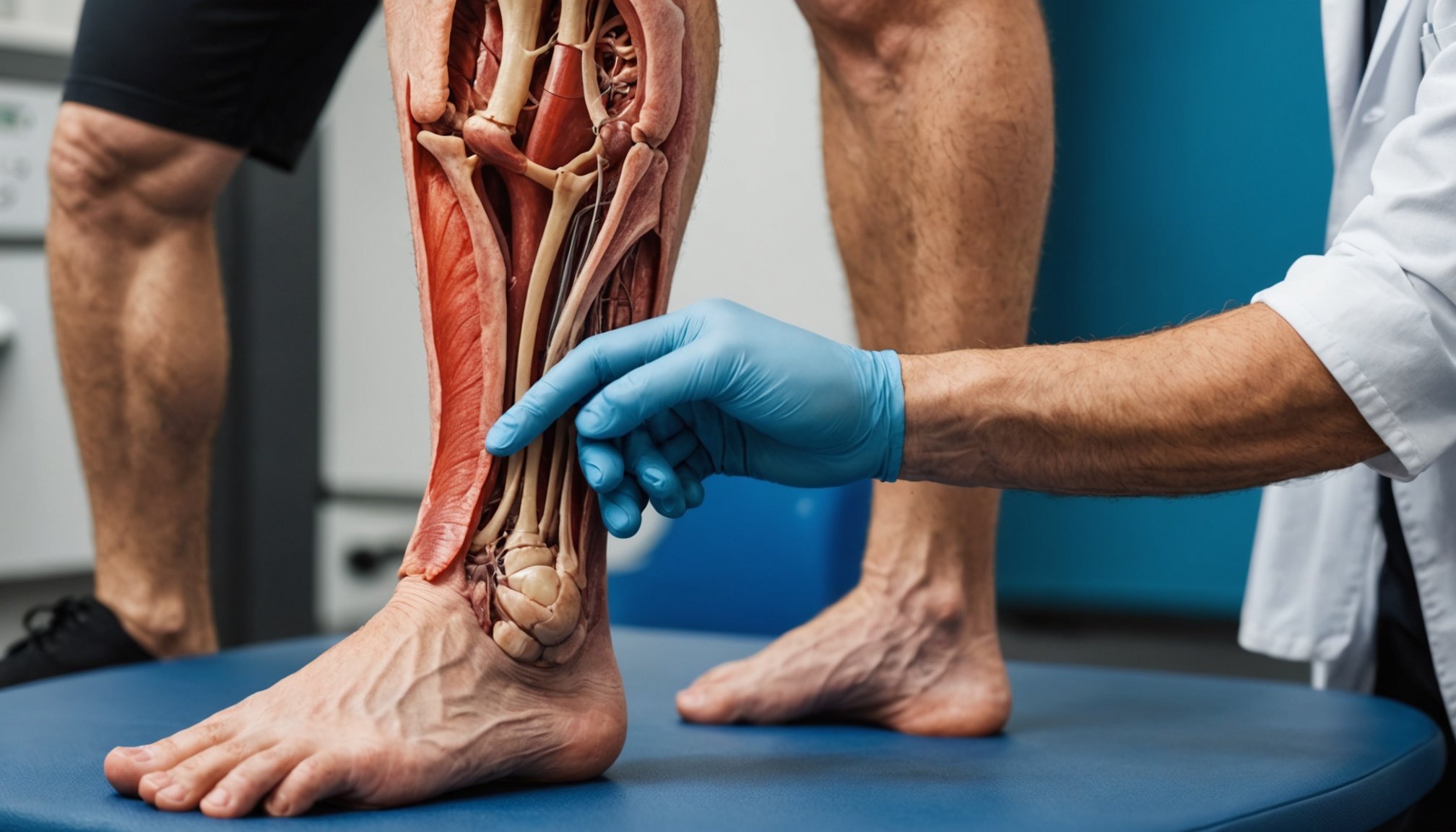Chronic tendon injuries can be frustrating, impacting daily life and athletic performance. Particularly, the growing interest in Platelet-Rich Plasma (PRP) therapy offers a promising alternative to traditional treatments. As we explore PRP therapy's potential effects on healing, it’s essential to understand how this innovative approach functions, its benefits, and whether it can truly provide the relief you seek. Discover if PRP therapy could be the game-changer for your tendon issues, and learn to make informed decisions about your recovery journey.
Understanding Platelet-Rich Plasma Therapy
Platelet-Rich Plasma (PRP) therapy is an innovative approach within regenerative medicine. It harnesses the body's natural healing processes to address chronic tendon injuries and other conditions. PRP therapy involves concentrating platelets from the patient's own blood, which are rich in growth factors that aid tissue repair and regeneration.
Have you seen this : Exploring the Impact of Cognitive Enhancement Apps on Memory Improvement in Dementia Patients
Definition and Components of PRP Therapy
PRP is created by drawing a small amount of blood from the patient. This blood is then placed in a centrifuge to separate the platelets from other blood components. The resulting platelet-rich plasma is a concentrated solution that enhances healing.
The Process of Obtaining and Preparing PRP
The preparation of PRP is straightforward yet precise. After centrifugation, the platelet-rich plasma is carefully extracted. This ensures a high concentration of platelets, crucial for effective therapy.
How PRP Therapy Differs from Other Treatments
Unlike conventional treatments, PRP therapy is minimally invasive and leverages the body's own resources. It offers a targeted approach to healing, especially for chronic tendon injuries. This method stands out in the field of regenerative medicine by promoting natural recovery rather than relying on synthetic substances.
- Benefits of PRP Therapy:
- Minimally invasive
- Utilizes patient's own blood
- Promotes natural healing
Mechanism of Action
Understanding how PRP therapy facilitates healing is essential to appreciating its role in regenerative medicine. At the heart of this process are growth factors, which play a pivotal role in tissue regeneration.
Role of Growth Factors in Tissue Regeneration
Growth factors are proteins that regulate cellular processes. In PRP therapy, they are concentrated to enhance the healing process. These factors stimulate cell proliferation and differentiation, crucial for tissue repair.
Mechanisms by Which PRP Promotes Healing in Tendons
PRP therapy is particularly effective for tendon repair. When injected into the affected area, the concentrated platelets release growth factors that initiate a cascade of biological responses. This includes the attraction of stem cells and the enhancement of collagen production, both vital for tendon repair.
Importance of Cellular Signaling in the Healing Process
Cellular signaling is integral to the healing process. It ensures that the growth factors reach the targeted cells, facilitating effective communication and coordination. This signaling is crucial for orchestrating the complex series of events that lead to tendon repair.
- Key Benefits of PRP in Tendon Repair:
- Enhanced tissue regeneration
- Targeted healing through cellular signaling
- Increased collagen synthesis
This intricate interplay of growth factors and cellular signaling underscores PRP therapy's effectiveness in promoting natural healing.
Scientific Evidence and Studies
Exploring the scientific evidence behind Platelet-Rich Plasma (PRP) therapy provides insights into its effectiveness for chronic tendon injuries. Numerous clinical studies have aimed to evaluate the benefits and limitations of this innovative treatment.
Overview of Key Studies
Several research findings highlight PRP's potential in treating tendon injuries. A 2019 study published in the Journal of Orthopaedic Research demonstrated significant improvements in pain and function among patients receiving PRP. Another clinical study in 2021 confirmed these results, emphasizing enhanced tissue regeneration.
Summary of Results and Effectiveness
The evidence-based results from these studies suggest that PRP therapy can significantly reduce recovery time and improve tendon function. Patients reported a marked decrease in pain levels and increased mobility post-treatment. However, the effectiveness of PRP can vary based on injury severity and individual patient factors.
Limitations and Gaps in Current Research
Despite promising research findings, there are limitations to current clinical studies. Variability in PRP preparation methods and injection protocols can lead to inconsistent results. Furthermore, long-term evidence-based outcomes require more extensive investigation.
- Key Limitations:
- Inconsistent preparation methods
- Limited long-term data
- Patient variability in response
These gaps underscore the need for standardized protocols and further clinical studies to enhance the reliability of PRP therapy for chronic tendon injuries.
Benefits of PRP Therapy
Understanding the advantages of PRP therapy can guide patients in making informed decisions about their treatment options.
Potential Benefits for Chronic Tendon Injuries
PRP therapy offers several treatment advantages for those suffering from chronic tendon injuries. By utilizing the body's own healing mechanisms, it provides a natural approach to recovery. Patients often experience significant pain relief, which can improve their quality of life. Furthermore, PRP therapy can enhance the overall healing process, making it a compelling option for those seeking alternatives to traditional methods.
Comparison with Traditional Treatment Methods
When compared to conventional treatments, PRP therapy stands out due to its minimally invasive nature. Traditional methods often rely on medication or surgery, which can have longer recovery times and potential side effects. In contrast, PRP therapy aims to reduce these issues by promoting natural healing. This approach not only targets the injury directly but also supports quicker pain relief and recovery.
Impact on Recovery Time and Overall Healing
The impact of PRP therapy on recovery time is noteworthy. Patients typically experience faster healing, allowing them to return to their daily activities sooner. This efficiency is a significant treatment advantage, as it reduces downtime and enhances the patient's overall well-being.
- Key Benefits:
- Accelerated recovery
- Enhanced pain management
- Natural healing process
Risks and Considerations
Understanding the potential risks and considerations of PRP therapy is crucial for making informed decisions.
Common Side Effects
When considering PRP therapy, one must be aware of common side effects. These may include swelling, bruising, and mild pain at the injection site. Such reactions are typically short-lived and manageable. However, it is essential for patients to monitor these symptoms and report any prolonged discomfort to their healthcare provider.
Potential Risks and Contraindications
PRP therapy, while generally safe, is not without its risks. Individuals with certain medical conditions, such as blood disorders or infections, should avoid the treatment. The contraindications are vital to discuss with a healthcare professional to ensure safety. In rare cases, allergic reactions or infections can occur, underscoring the need for a thorough medical evaluation before proceeding.
Importance of Consulting a Healthcare Professional
Consulting a healthcare professional is paramount before undergoing PRP therapy. They can provide personalized advice, considering your medical history and the safety of the treatment. This step is crucial to minimize potential risks and ensure the safety and effectiveness of the therapy.
- Key Considerations:
- Discuss medical history
- Understand potential side effects
- Evaluate treatment contraindications
Comparing PRP Therapy to Other Treatments
Exploring various alternative treatments for tendon injuries can help individuals make informed decisions about their healthcare options.
Overview of Alternative Treatments
When considering tendon injuries, several alternative treatments are available. Common options include corticosteroids, physical therapy, and surgery. Each method has its benefits and limitations, making it essential to evaluate them based on individual needs and injury severity.
Comparative Effectiveness of PRP Versus Corticosteroids
Corticosteroids are often used to reduce inflammation and provide short-term relief. However, their long-term effectiveness can be limited. In contrast, PRP therapy offers a more sustainable approach by promoting natural healing. Studies have shown that PRP can lead to improved tissue regeneration and reduced recovery time compared to corticosteroids.
When to Consider Surgical Options
Surgery may be necessary for severe tendon injuries that do not respond to less invasive treatments. However, it often involves longer recovery periods and potential complications. PRP therapy presents a compelling alternative by offering a less invasive option with fewer risks.
- Key Considerations:
- Severity of injury
- Patient's overall health
- Response to previous treatments
By understanding the nuances of these alternative treatments, patients can better navigate their options and choose the most suitable path for their recovery.
Patient Testimonials and Case Studies
Exploring real-life experiences with PRP therapy reveals valuable insights into patient outcomes and success stories. These narratives highlight the practical benefits and quality of life improvements achieved through this innovative treatment.
Compilation of Patient Testimonials
Real-life experiences from patients undergoing PRP therapy provide compelling evidence of its effectiveness. Many individuals report significant pain reduction and enhanced mobility. One patient shared, "After struggling with chronic tendon pain, PRP therapy transformed my life, allowing me to return to my favorite activities."
Analysis of Case Studies Showcasing Success Rates
Case studies further illustrate the success rates of PRP therapy. For instance, a study involving 50 patients with chronic tendon injuries showed a 70% improvement in pain and function within six months. These findings underscore the therapy's potential in promoting natural healing.
Insights into Patient Satisfaction
Patient satisfaction is a crucial aspect of real-life experiences with PRP therapy. Many individuals express gratitude for the quality of life improvements they experience post-treatment. A common sentiment is the empowerment felt from choosing a minimally invasive option that leverages the body's healing capabilities.
- Key Takeaways:
- Significant pain reduction
- Enhanced mobility
- High patient satisfaction
Frequently Asked Questions
Addressing common concerns and patient inquiries about PRP therapy.
Common Misconceptions about PRP Therapy
PRP therapy often faces misconceptions, leading to common concerns among patients. A prevalent myth is that it is a painful process. In reality, most patients report minimal discomfort during treatment. Another misconception is that PRP is only for athletes. While athletes benefit significantly, it is effective for anyone with chronic tendon injuries.
Answers to Frequently Asked Questions Regarding Effectiveness
Patients frequently inquire about the effectiveness of PRP therapy. Studies demonstrate a high success rate in reducing pain and improving function. A common question is, "How soon will I see results?" Most patients notice improvement within a few weeks, but full benefits may take several months.
Guidance on What to Expect During Treatment
Understanding what to expect can alleviate common concerns. The PRP therapy process involves drawing blood, centrifugation, and injection, typically completed within an hour. Patients often ask, "Is there downtime?" Minimal downtime is required, allowing a quick return to daily activities.
- Common Concerns:
- Pain during treatment
- Suitability for non-athletes
- Timeframe for seeing results
These insights aim to address patient inquiries, ensuring a clearer understanding of PRP therapy.
Future Directions and Research
Exploring the future of PRP therapy reveals promising advancements and ongoing studies. These developments are set to enhance its applicability, especially in sports medicine and rehabilitation.
Emerging Trends in PRP Therapy Research
In the evolving landscape of regenerative medicine, PRP therapy is gaining momentum. Recent studies focus on optimizing platelet concentration and delivery methods. Researchers are experimenting with innovations such as combining PRP with other biologics to boost its efficacy. This trend aims to refine treatment protocols, making PRP more effective across various medical fields.
Potential Innovations and Improvements in Treatment Protocols
Innovations in PRP therapy are not just limited to concentration techniques. Emerging protocols include personalized PRP formulations tailored to individual patient needs. These advancements could revolutionize how sports medicine professionals approach injury rehabilitation.
- Key Innovations:
- Personalized PRP formulations
- Combination with other biologics
- Enhanced delivery systems
The Future Role of PRP in Sports Medicine and Rehabilitation
PRP therapy's role in sports medicine is expanding. It is increasingly recognized for its potential to accelerate recovery and improve outcomes. Ongoing studies suggest that PRP could become a staple in treating sports-related injuries, offering athletes a natural and efficient path to recovery. The future of PRP is bright, with continued research paving the way for innovations and broader applications.











